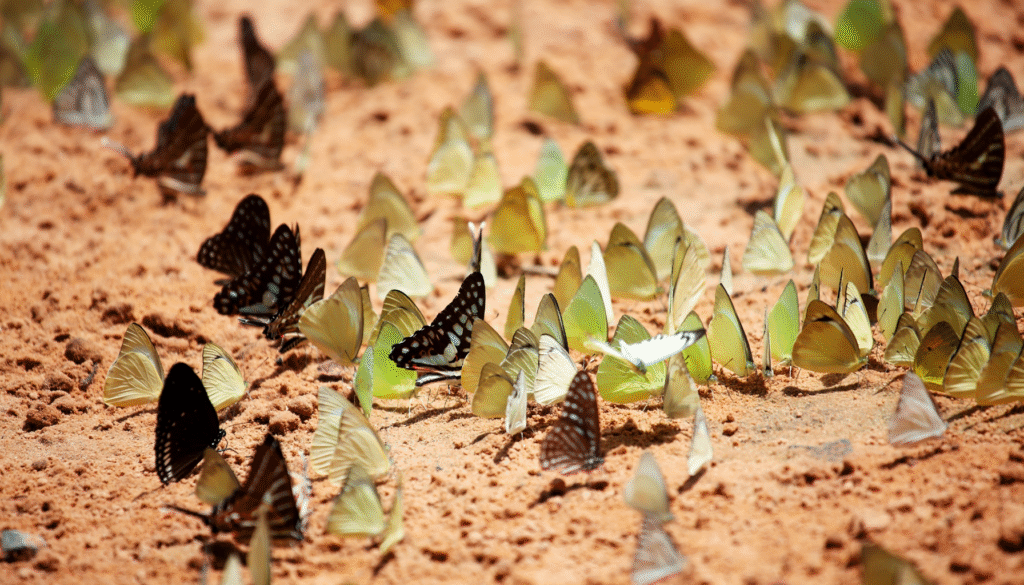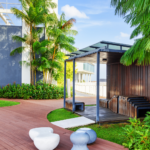Butterflies do more than just flutter around looking beautiful—they play a vital role in pollination and keeping your garden ecosystem balanced. By creating a butterfly-friendly garden, you’re not only attracting these delicate creatures but also supporting nature in a powerful way.
The best part? You don’t need a huge yard or tons of experience. With the right plants, layout, and care, you can turn any garden—big or small—into a welcoming haven for butterflies.
Here’s how to do it.
Why Attract Butterflies?
Butterflies are important pollinators, just like bees. But beyond that, they:
- Help pollinate flowers, herbs, and vegetables
- Indicate a healthy, thriving garden
- Bring movement, color, and joy to your space
Plus, watching butterflies is incredibly relaxing—it turns your backyard into a peaceful retreat.
Step 1: Choose the Right Plants
Butterflies love nectar-rich flowers and specific host plants where they can lay eggs. A great butterfly garden includes both.
Best Nectar Plants:
These provide food for adult butterflies:
- Coneflowers (Echinacea)
- Butterfly bush (Buddleia)
- Black-eyed Susan
- Zinnias
- Verbena
- Lantana
- Joe-Pye Weed
- Milkweed (also a host plant!)
Best Host Plants:
These are where butterflies lay eggs, and caterpillars feed:
- Milkweed (Monarch butterflies)
- Dill and fennel (Swallowtails)
- Parsley (Black Swallowtails)
- Violets (Fritillaries)
Pro tip: Choose native plants whenever possible. Butterflies love what they know!
Step 2: Plant in Clusters
Butterflies are more likely to visit if your plants are grouped together in clusters of color, rather than spread out randomly.
Why it works:
- Easier for butterflies to spot
- Encourages longer visits
- Looks fuller and more vibrant
Try planting 3–5 of the same flower together in one spot. It’s good for pollinators and garden aesthetics.
Step 3: Include Sun and Shelter
Butterflies are cold-blooded—they need sunlight to stay warm and active.
To support them:
- Pick a sunny spot (at least 6 hours of sunlight daily)
- Avoid heavy wind areas
- Add flat rocks for sunbathing
- Include shrubs or taller plants where they can hide or rest
A garden with variety in height and texture gives butterflies a safe and welcoming environment.
Step 4: Provide Water (But Not Too Much)
Butterflies don’t drink from open water sources like birds. Instead, they prefer to “puddle”—sipping moisture and minerals from damp soil or shallow dishes.
Create a butterfly puddling station:
- Shallow dish or tray filled with damp sand or gravel
- Optional: mix in a pinch of salt or mineral-rich soil
- Keep it slightly moist and in a sunny location
This small detail can make a big difference.
Step 5: Go Organic—Seriously
Pesticides and chemical fertilizers are extremely harmful to butterflies and caterpillars.
Do this instead:
- Use compost or organic fertilizers
- Embrace “good bugs” like ladybugs and lacewings
- Accept a few chewed leaves—it means your garden is alive
A butterfly garden is a wild, living space, not a perfect one. Let nature do its thing.
Step 6: Plan for Continuous Bloom
Butterflies are around from spring to fall. To keep them coming, plant flowers that bloom in different seasons.
Example timeline:
- Spring: Daisies, phlox, wild violets
- Summer: Coneflowers, milkweed, butterfly bush
- Fall: Goldenrod, asters, sedum
This ensures a constant source of food for your fluttering visitors.
Step 7: Limit Lawn Space
Lawns are pretty—but to butterflies, they’re just empty space. The less lawn you have, the more room there is for the plants butterflies love.
If possible, convert part of your lawn into:
- A native wildflower bed
- A pollinator-friendly border
- A mini herb or vegetable garden that attracts butterflies too
Even small changes have a big impact.
Step 8: Be Patient and Observant
A butterfly garden won’t fill up overnight. But with time, color, and care, you’ll begin to notice:
- Caterpillars munching away on host plants
- Butterflies floating through at different times of day
- A buzzing, blooming, living ecosystem
Keep a journal or take photos to track what species visit your garden—each one is a sign your space is thriving.
Final Thoughts: A Garden That Gives Back
Creating a butterfly-friendly garden is about more than pretty flowers—it’s about building a space that gives back to nature. You’ll enjoy beauty, movement, and color, while supporting pollination and biodiversity.
Whether it’s a corner of your yard or a few pots on your patio, you can create a sanctuary for butterflies—and for your soul. 🦋🌸



